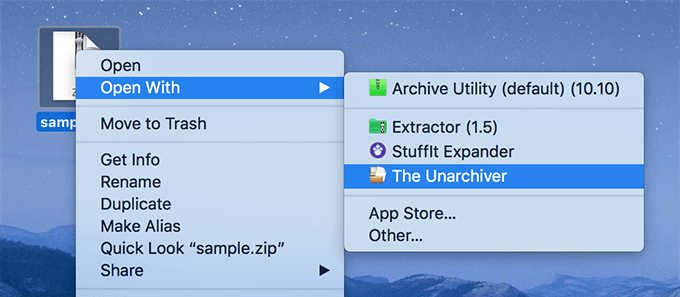

To do this, open Spotlight on your Mac (Command+Space), and search for “Archive Utility. How to Change Archive Utility SettingsĮven though Archive Utility has no visible UI, you can change some of its settings. If it was a single file, you’ll see that the file will return to its original state, with the name intact. If you are decompressing a folder or a Zip file that contained multiple files, it will show up as a folder with the same name as the archive. After several seconds, the file or the folder will decompress in the same folder. Navigate to the archive in the Finder app and double-click the Zip file. It doesn’t matter if it’s a Zip file that you downloaded on the internet or something that you compressed yourself. You can now move the compressed Zip file to another folder or send it along as an email attachment. RELATED: The Fastest Ways to Rename Files on macOS If you compressed multiple files, you’ll see a new file with the name “Archive.zip.” You should rename the file to make it easier to find. If you compressed a single file or folder, the archive will carry the same name, with a “.zip” extension. Mac OS X does not use EXE files so there is no extraction tool. Archive Extractor is a small and easy online tool that can extract over 70 types of compressed files, such as 7z, zipx, rar, tar, exe, dmg and much more. Once the compression process is finished, you’ll see a new compressed file in the same folder. The Extractor is a free tool available on the official Mac App. If you’re using multiple files, the Compress option will also show you how many files you’ve selected. Once you’ve made the selection, right-click on it to view the context menu. Here, click the “Compress” option.


 0 kommentar(er)
0 kommentar(er)
